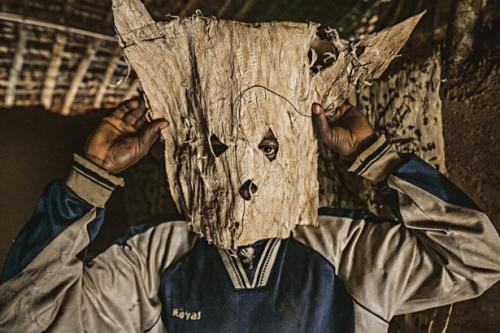You are here
The latest Ebola crisis may yield clues about where it hides between outbreaks.
GLOBAL LITERACY PROJECT June 15, 2015
abstract of article in
NATIONAL GEOGRAPHIC by David Quammen
(Scroll down for full article.) 
Picture of a masked bush meat hunter. Peter Muller.
...Among the most puzzling aspects of Ebola virus, since its first recognized emergence almost four decades ago, is that it disappears for years at a time. Since a 1976 outbreak in what then was Zaire (now the Democratic Republic of the Congo) and a simultaneous episode with a closely related virus in what was then southern Sudan (now South Sudan), the sequence of Ebola events, large and small, has been sporadic. During one stretch of 17 years (1977-1994) not a single confirmed human death from infection with Ebola virus occurred. This is not a subtle bug that simmers delicately among people, causing nothing more than mild headaches and sniffles. If it had been circulating in human populations for those 17 years, we would have known.
A virus can’t survive for long, or replicate at all, except within a living creature. That means it needs a host—at least one kind of animal, or plant, or fungus, or microbe, whose body serves as its primary environment and whose cell machinery it can co-opt for reproducing. Some harmful viruses abide in nonhuman animals and only occasionally spill into people. They cause diseases that scientists label zoonoses. Ebola is a zoonosis, an especially nasty and perplexing one... Where does it hide, quiet and inconspicuous, between outbreaks?
http://www.geneticliteracyproject.org/2015/06/15/finding-ebolas-hiding-place-key-to-stopping-another-major-outbreak/
Read full National Geographic article.
http://ngm.nationalgeographic.com/2015/07/ebola/quammen-text



Comments
Nature - Fruit bats as reservoirs of Ebola virus
Supporting documentation for the article above is provided in the link below . . .
Nature - Fruit bats as reservoirs of Ebola virus
http://www.nature.com/nature/journal/v438/n7068/full/438575a.html